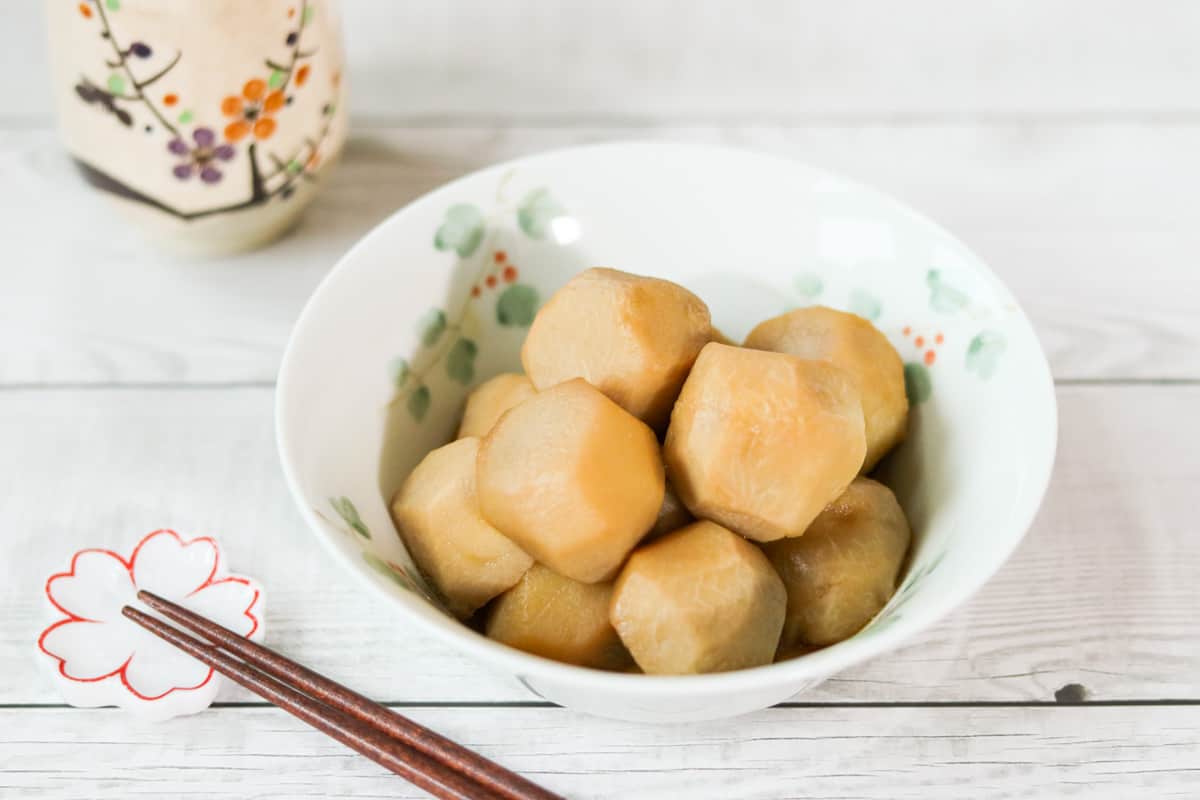
Satoimo, also known as taro root, is a starchy tuber popular in Asian cuisine. Ever wondered what makes this root so special? Satoimo boasts a unique texture, often described as creamy or slimy, which adds a distinct character to dishes. Rich in fiber, vitamins, and minerals, it’s a nutritious addition to any meal. But there's more to this humble root than meets the eye. From its historical significance in Japanese culture to its surprising health benefits, Satoimo has a lot to offer. Whether you're a foodie, a health enthusiast, or just curious, these 15 facts will give you a deeper appreciation for this versatile tuber.
Key Takeaways:
- Satoimo, also known as taro root, is a versatile and nutritious vegetable with high fiber, low calories, and essential vitamins and minerals. It can be boiled, mashed, or fried for a delicious and healthy culinary experience.
- Culturally significant, satoimo is used in traditional Japanese, Hawaiian, and Chinese cuisines, and is a symbol of family unity and prosperity. It thrives in tropical climates, requiring moist soil and a long growing season.
What is Satoimo?
Satoimo, also known as taro root, is a starchy tuber widely used in Asian cuisine. Its unique texture and flavor make it a staple in many dishes. Let's dive into some fascinating facts about this versatile root vegetable.
Nutritional Benefits of Satoimo
Satoimo is not just tasty; it's packed with nutrients that offer numerous health benefits. Here are some key nutritional facts:
- Rich in Fiber: Satoimo contains a high amount of dietary fiber, which aids digestion and helps maintain a healthy gut.
- Low in Calories: Despite being starchy, satoimo is relatively low in calories, making it a good option for those watching their weight.
- High in Vitamins: This root is a good source of vitamins like Vitamin E and Vitamin C, which are essential for skin health and immune function.
- Mineral-Rich: Satoimo provides important minerals such as potassium, magnesium, and iron, which are crucial for various bodily functions.
Culinary Uses of Satoimo
Satoimo's versatility in the kitchen is one of its most appealing features. Here are some ways it can be used:
- Boiled or Steamed: One of the simplest ways to prepare satoimo is by boiling or steaming it, which brings out its natural flavors.
- In Soups and Stews: Satoimo adds a creamy texture to soups and stews, making them more filling and nutritious.
- Fried or Roasted: For a crispy treat, satoimo can be fried or roasted, offering a delightful crunch.
- Mashed: Similar to mashed potatoes, mashed satoimo can be a comforting side dish.
Cultural Significance of Satoimo
Satoimo holds a special place in various cultures, especially in Asia. Here are some cultural facts:
- Japanese Cuisine: In Japan, satoimo is often used in traditional dishes like nimono (simmered dishes) and oden (a type of hot pot).
- Hawaiian Tradition: Known as "kalo" in Hawaii, satoimo is a sacred plant and a staple food in traditional Hawaiian diets.
- Chinese Festivals: In China, satoimo is commonly eaten during the Mid-Autumn Festival as a symbol of family unity and prosperity.
Growing Satoimo
Interested in growing your own satoimo? Here are some facts about its cultivation:
- Tropical Plant: Satoimo thrives in tropical and subtropical climates, requiring warm temperatures and plenty of water.
- Long Growing Season: It has a long growing season, typically taking about 7-12 months to mature.
- Requires Moist Soil: The plant needs consistently moist soil to grow well, making it ideal for regions with high rainfall.
Fun Facts About Satoimo
Let's wrap up with some fun and lesser-known facts about satoimo:
- Multiple Names: Satoimo goes by many names around the world, including taro, dasheen, and eddoe, reflecting its widespread popularity.
Satoimo is more than just a root vegetable; it's a nutritional powerhouse, a culinary delight, and a culturally significant plant. Whether you're enjoying it in a traditional dish or experimenting with new recipes, satoimo offers something for everyone.
Final Thoughts on Satoimo
Satoimo, also known as taro, is a fascinating root vegetable with a rich history and numerous health benefits. Packed with fiber, vitamins, and minerals, it supports digestion, heart health, and immune function. Its unique texture and flavor make it a versatile ingredient in many dishes, from soups to desserts.
Growing satoimo can be rewarding, though it requires patience and the right conditions. Whether you’re a seasoned gardener or a curious cook, exploring satoimo can add a new dimension to your culinary and gardening experiences.
Understanding its cultural significance, especially in Asian cuisines, adds another layer of appreciation. Satoimo isn’t just food; it’s a connection to traditions and heritage.
So next time you’re at the market, consider picking up some satoimo. You might just find a new favorite ingredient that’s both delicious and nutritious.
Frequently Asked Questions
Was this page helpful?
Our commitment to delivering trustworthy and engaging content is at the heart of what we do. Each fact on our site is contributed by real users like you, bringing a wealth of diverse insights and information. To ensure the highest standards of accuracy and reliability, our dedicated editors meticulously review each submission. This process guarantees that the facts we share are not only fascinating but also credible. Trust in our commitment to quality and authenticity as you explore and learn with us.


